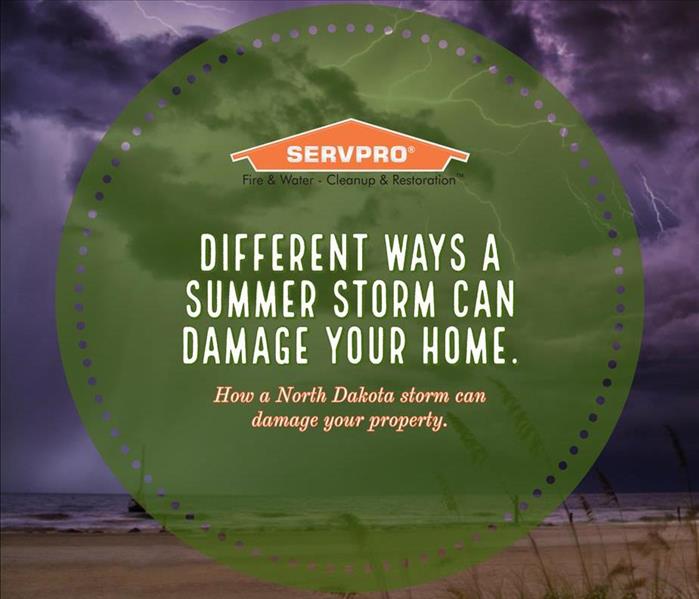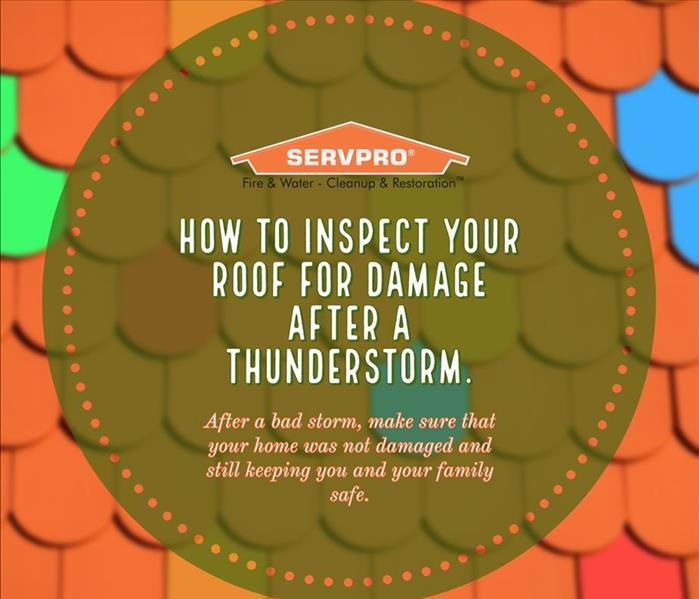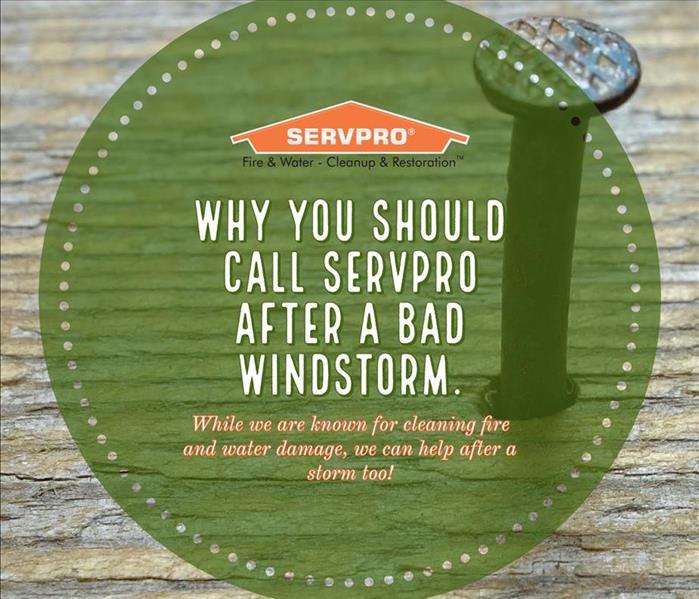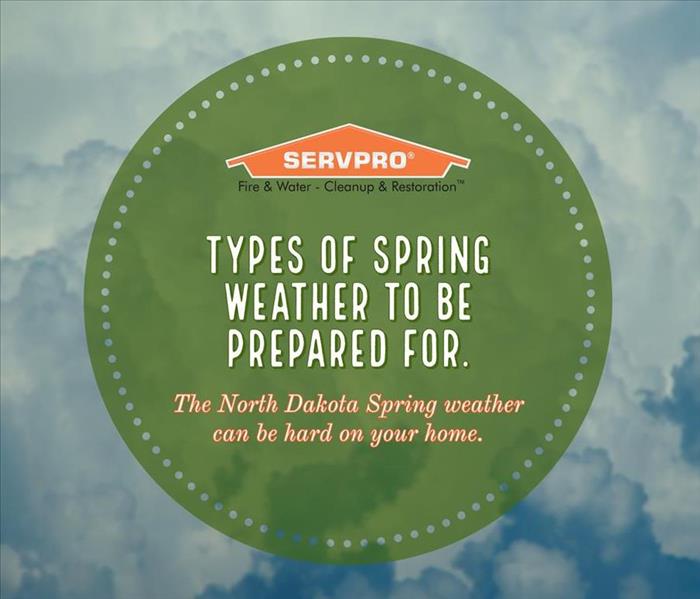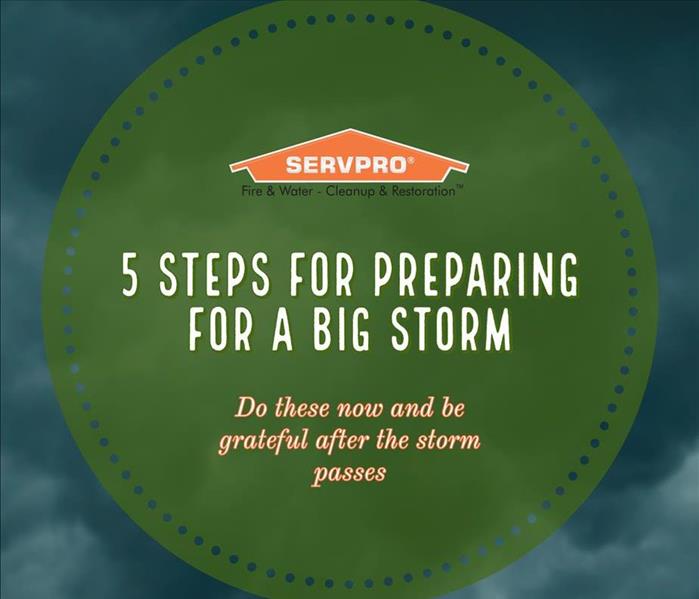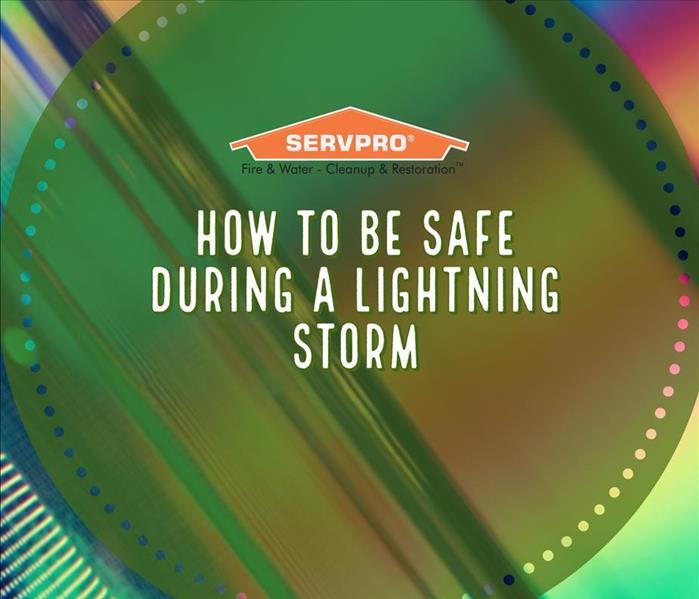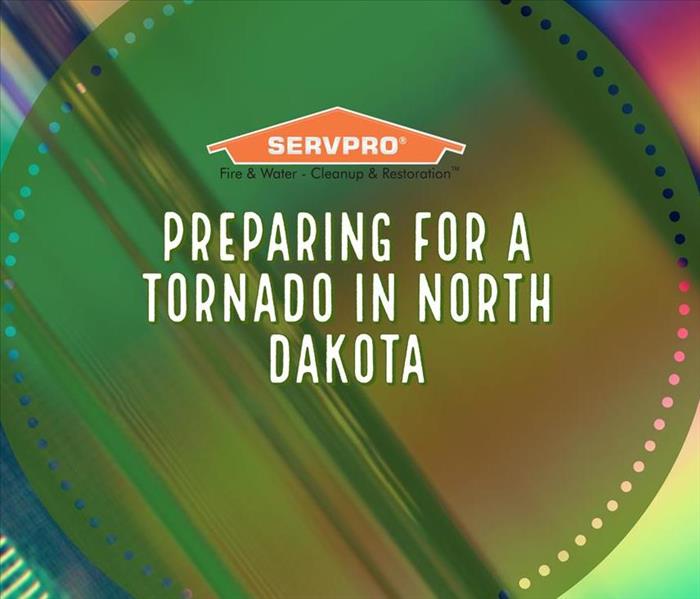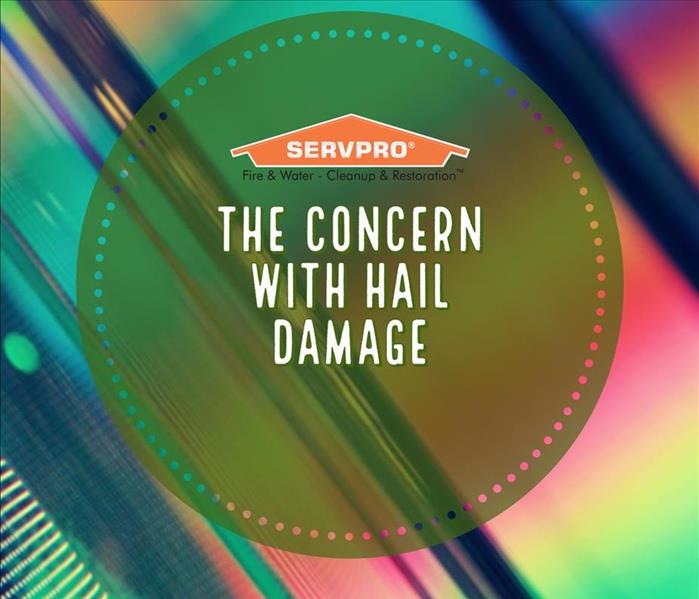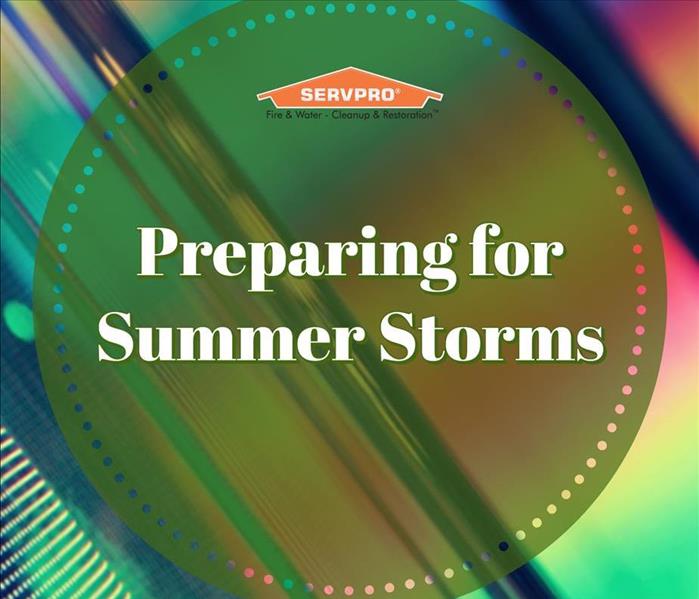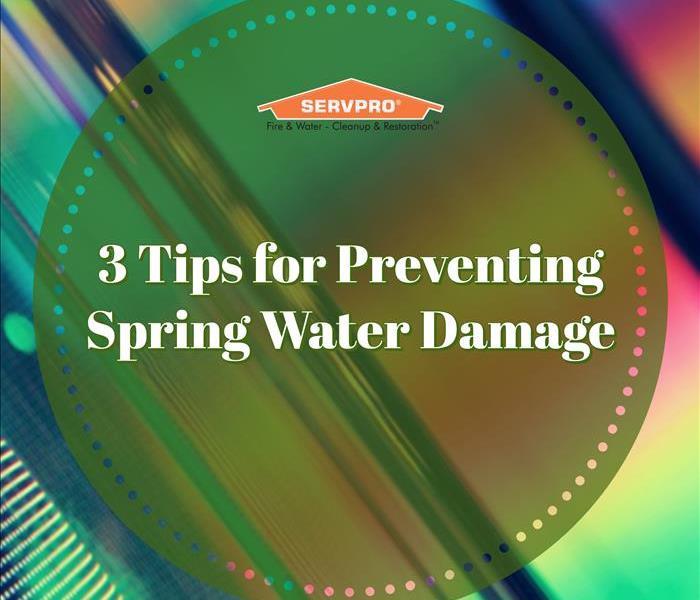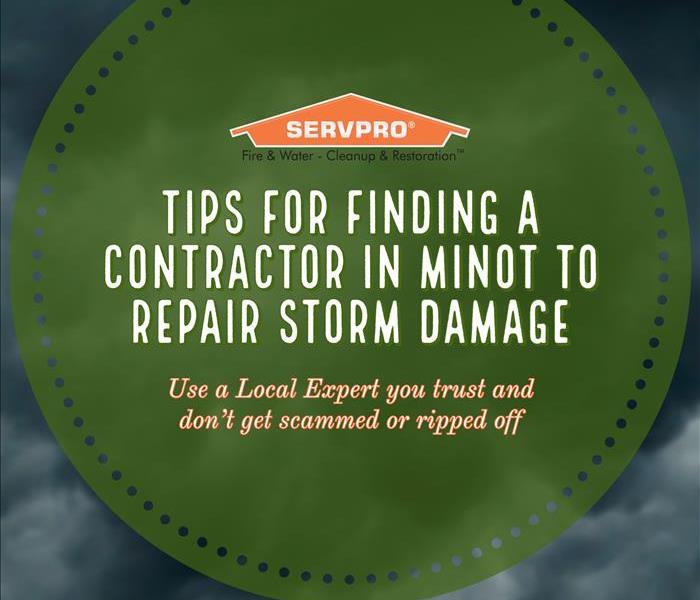Archived Storm Damage Blog Posts
Does Windchill Affect Your Home?
1/4/2023 (Permalink)
 Windchill Affect on Homes
Windchill Affect on Homes
In North Dakota, we are used to the phrase “It wouldn’t be so cold if it wasn’t for the wind.” Windchill is calculated through a formula that describes how much colder the air temperature is due to heat loss caused by winds. While windchill is usually used to describe how the temperature affects humans, it is important to remember how it can damage your home.
The same way humans give off heat through their skin, homes give off heat through low insulated spots such as windows, open doors, or leaks. The more insulated a home is, the better it will be at retaining heat. Wind chill affects every and all objects, until it doesn’t. It stops having an effect when the object is the same temperature as the actual air temperature. Any warm heat sources like your body or your home, that are trying to maintain a warm temperature in a cold environment, will all be affected by windchill.
When a wind chill advisory is in effect, if you have a drafty home or if you accidentally leave the fireplace flue open or a window is not fully closed, the cold wind is going to have a noticeable effect on your home heating and home comfort. Make sure to insulate and seal up your house as much as possible. A poorly insulated home is susceptible to water damage caused from leaks or frozen pipes.
When dealing with cold temperatures, wind can have an additional impact on your home and heating bill. Properly insulating your home and sealing up cracks or other drafts can make a huge difference in the lifespan and value of your home. When the windchill temperature gets lower, be sure to keep your home protected and prevent disaster.
How to Prepare for a Winter Storm
12/1/2022 (Permalink)
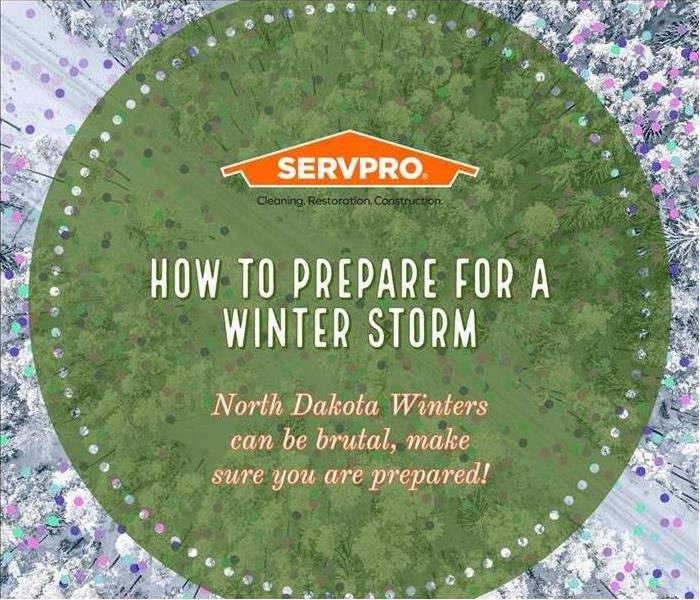 Be prepared this winter!
Be prepared this winter!
In North Dakota, we are no strangers to a bad winter. With freezing temperatures, lots of snow, and high winds, winter storms can be dangerous for your home and your family. Here are some tips to make sure you're ready for the North Dakota winter.
Be Prepared to Lose Power
The biggest worry during a storm is that you will lose power. Although this is usually restored within a few hours, it is very possible to lose power for multiple days if there are multiple power lines down throughout the area. Stocking up on non-perishable food, warm clothing, and buying batteries is essential. If you can have a generator fueled and ready to power your home, this would be the best-case scenario to ensure your families safety. Be in contact with friends and family and have an emergency home to go to in case you need to stay a few days somewhere else while power is restored.
Be Aware of Frozen Pipes
In freezing temperatures, water pipes are very susceptible to freezing. Even if your home has power and heat, pipes can still freeze. To prevent this, use water sources regularly so that water flows through pipes and doesn't have time to build up and freeze. If you try to use a sink, toilet, or appliance and there is no water coming into it, this is a sign you might have a pipe break. Another tip for prevention is to have a tiny drip of water flow through your pipes to stop pressure from building up.
Remove Snow as Far Away from Home as Possible
If feasible, push snow away from your home. This will prevent ice from building up around your home and its foundation, which could cause cracks and leaks inside the house. Pushing snow away from your home will also help during spring when snow and ice begins melting. If there is too much water near your home, it can seep in through the foundation or other cracks in your windows or siding. Although sometimes snow has to be piled up next to your house, when possible, push it as far away as possible.
We hope you and your family stay safe this winter! If you ever suspect you have water damage, give us a call and we can use our water detection technology to find any leak or pipe break!
Why Choose SERVPRO of Minot for Storm Damage Cleanup?
8/23/2022 (Permalink)
We're Faster to Any Size Disaster
We're dedicated to responding immediately to water and storm damage emergencies. A fast response lessens the damage, limits further damage, and reduces the cost.
We're Highly Trained Storm Damage Specialists
As leaders in the storm and water damage industry, we have advanced training and expertise, not to mention a ton of hands-on experience. We use this training and experience to quickly dry your home and restore it back to pre-storm condition.
- Water Damage Restoration Technician
- Applied Structural Drying Technician
We Have the Resources to Handle Storms and Disasters
We can scale our resources to handle any size storm or disaster. We can access resources from a network of 2010 franchises across the country and elite Disaster Recovery Teams strategically located throughout the country.
Water Damage Safety Tips After a Storm
8/23/2022 (Permalink)
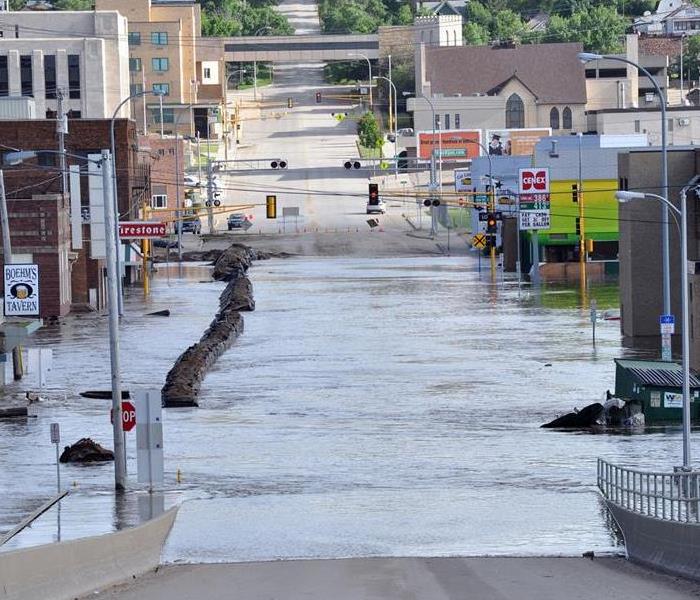 Souris River flood of 2011
Souris River flood of 2011
Heavy rain fall from massive summer storms can easily cause flooding outside and inside your home. After any water damage situation, your primary focus should be safety first. Here are some safety tips to follow until help arrives:
- Is it safe to stay inside the house?
- Electrical and "slip and fall" hazards are some of the most prevalent concerns.
- Only do activities that are safe for you to preform.
- Wet materials can be very heavy. Be careful!
What to Do After Flooding
- Remove excess water by mopping and blotting.
- Wipe excess water from wood furniture after removal of lamps and tabletop items.
- Remove and prop up wet upholstery and cushions.
- Place aluminum foil or wood blocks between furniture legs and wet carpeting.
- Turn air conditioning on for maximum drying during the summer months.
- Remove colored rugs from wet carpeting.
- Remove art objects to a safe, dry place.
- Gather loose items from floors.
What NOT to do After Flooding
- Don't wet fabrics in place. Hang furs and leather goods.
- Don't leave books, magazines, or other colored items on wet carpet or floors.
- Don't use your household vacuum to remove water.
- Don't use the television or other household appliances.
- Don't turn on ceiling fixtures if the ceiling is wet, and keep out of rooms where the ceilings are sagging.
For any water damage caused by a storm, call SERVPRO of Minot to help you clean up the mess and make it feel "Like it never even happened".
Fighting Storm Damage with SERVPRO
8/8/2022 (Permalink)
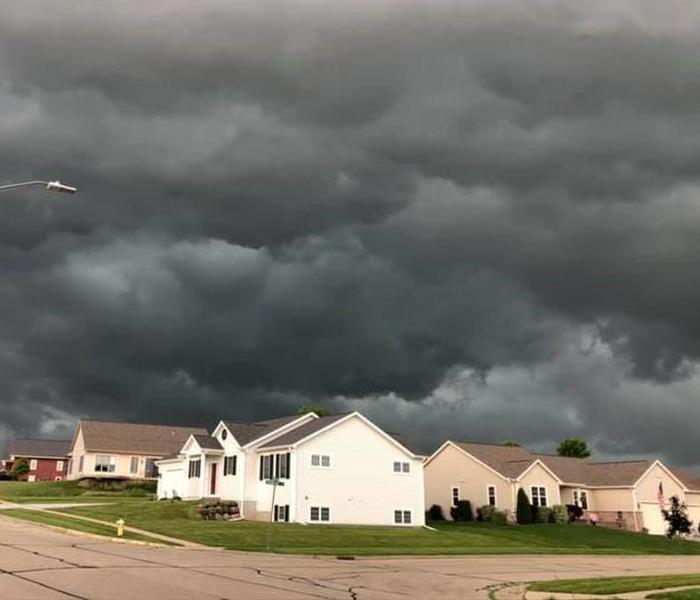 Storm clouds gather above a residential neighborhood.
Storm clouds gather above a residential neighborhood.
A serious storm can wreak havoc in a home.
If you’re facing storm damage in your home, it can feel overwhelming. You may not know where to begin or who to call for help. But with the right tools and knowledge, you can deal with even the worst storm damage on your own.
You don’t have to be a master of disaster response—you just need some basic tools and a few tips from the experts at SERVPRO of Minot. We're "here to help"!
The first thing you should do is stop any further water damage by turning off electrical power and gas supplies if possible and removing anything that's been damaged or soaked like rugs and carpets. Once that's done, dry out wet areas using fans or dehumidifiers as needed so mold doesn't start growing on wet debris.
Storm Damage Clean-up and Restoration Services
SERVPRO of Minot is a leader in the restoration industry. Our network of franchise professionals are trained to make your home feel like new again. We provide 24/7 emergency services and have over 1,700 franchises nationwide. SERVPRO has been in business for over 30 years, so you can be sure that we are qualified to restore your home or business back to preloss condition. When disaster strikes, you need fast action from a company with experience – that's what you'll get when you call us!
SERVPRO of Minot provides a wide range of restoration services, including water damage clean up, fire or smoke damage repair, mold remediation and reconstruction following a storm or other weather event (floods).
Heavy Rainfall
You may not be thinking about it, but water damage can cause mold, wood rot, electrical damage and structural problems. It can also lead to fires and health issues. Water damage can cost you money in many ways—not only the cost of repairing the water damaged areas but also when you deduct from your insurance claim what you spend on temporary housing while your home or business is being repaired.
Storm damage can cause sewer backup and foundation problems.
Storm damage is a serious matter. It can cause flooding, sewer backup and foundation problems. Water can come in through the roof, walls and windows. This can cause damage to the electrical system, plumbing system, HVAC system and drywall.
Ice Storm
During an ice storm, you can expect:
Roof shingles blown off by high winds or heavy weight from accumulations of snow or ice.
Gutters clogged with frozen snow blocking water flow and causing leaks inside the home when melting begins. Snow also collects in gutters after falling off roofs due to high winds, which can lead to leaks inside your house during thawing periods later in springtime months ahead; this is especially dangerous if you live at higher elevations where temperatures fluctuate drastically between nightfall hours (when temperatures cool) versus daytime hours (when temperatures rise again). Due to these fluctuations in temperature levels throughout different seasons throughout any given year cycle (springtime through summer), it's important for homeowners living at higher altitudes like mountain suburbs where trees tend grow tall enough into skyward reaches so as not block sunlight during colder months - because these types of locations typically require more maintenance work throughout seasons due to changing weather patterns! That being said...
Blizzards and Snowfall
When a blizzard or snowfall hits your area, you'll want to be prepared. While most people think of the damage that these events can cause to their homes and cars, they actually also cause some more hidden threats.
Roof Damage: A heavy amount of snow can put a lot of pressure on your roof. This can cause it to buckle or collapse under the weight. If this happens while you're sleeping, it could trap you inside and even cause death if there's no way out!
Water Damage: Snowmelts into water when it melts off in warmer weather. The rainwater pools up in gutters, which overflow onto decks and patios below them (if there aren't drainage systems). This can lead not only to slippery surfaces but also mold growth if left untreated long enough for mold spores from outdoors finding their way indoors via indoor air circulation systems such as furnaces or ventilation fans blowing air from outside into living spaces where people spend most time throughout day/night cycle each day year round (more so during winter months).
After storm damage, you need the professionals at SERVPRO of Minot to help you get your life back together.
If you need storm damage cleanup in the middle of the night, we’re here for you. We have expert technicians who can come to your home and begin the process of restoring it to normal. We also have 24/7 emergency service available so that we can respond quickly to any type of storm damage that is happening in your area.
We understand how much time and effort is involved in cleaning up after a disaster like this one, and we look forward to helping you get back on track as soon as possible! Our goal is always to help our clients get their lives back together again by restoring their homes as quickly as possible.
Preparing Your Property for Colder Weather
8/4/2022 (Permalink)
 Icicles hanging off a frozen branch
Icicles hanging off a frozen branch
It's that time of year when the weather transitions from summer to fall. The cooler temperatures, shorter days and changing leaves are all signs that winter is on its way. While some people look forward to the change in seasons, there are others who dread it because they know their property won't be ready for it. You can avoid costly repairs by making sure your home or business is prepared for any inclement weather that comes its way.
Fall also means cooler temperatures and a change in weather that can cause damage to your property if it isn't prepared.
Fall also means cooler temperatures and a change in weather that can cause damage to your property if it isn't prepared. It's important to prepare for the season so that you don't need to make costly repairs when things start going wrong.
Minot gets cold fast, and residents know how much of a difference the temperature can make. Trees will be more brittle, which makes them more likely to fall onto power lines or houses during windy days. This can cause power outages or even fires if something catches fire from the heat generated by an electric light bulb. In addition, falling leaves can create debris on lawns that could blow into a storm drain and clog it up, causing flooding when rain comes down hard later on!
It's important to make sure your home or business is ready for the storm season brought on by colder temperatures.
It's important to make sure your home or business is ready for the storm season brought on by colder temperatures. The following steps will help protect your property from weather-related damage and health risks:
Make sure all of your gutters are free of debris and clear where necessary.
Clear leaves and other trash from around any vents or drains on the exterior of your home, and check water pipes regularly while they're still warm to make sure they won't freeze over in colder months.
Move outdoor furniture into an enclosed area if possible; not only will it give you more space inside, but it'll also prevent any potential water damage if rain or snow falls unexpectedly!
Roof maintenance.
Roof maintenance is an important part of preparing your property for the fall weather. The following are some tips to help maintain your roof:
Make sure your roof is in good condition. Check for missing or damaged shingles, loose nails and standing water on the ground around the house. Look for cracks in shingles or missing shingles; this could indicate that a leak has formed.
If you have any concerns about your roof's condition, consult a professional before taking any action yourself as this may make things worse instead of better!
Clear gutters, downspouts and drains of leaves and debris.
The exterior of your home should be in good condition. If you don’t have gutters, it’s time to install them now. Use our handy checklist to make sure that your gutter system is ready for the fall:
Gutter screens - Check for holes or tears in screens. Replace all torn screens with mesh available at most hardware stores
Shingles - Inspect shingles for cracks, missing granules and loose nails
Gutters and downspouts - Clean out leaves, twigs and other debris from downspouts as well as gutters
Drains - Make sure drains are clear so water flows freely away from your home
Trim overhanging branches that can damage roofs and gutters.
When trimming your trees, you should not just focus on the branches that hang over your house. You should also be mindful of any branches that hang close to power lines. If a branch falls onto power lines, this could lead to an electrical fire in your home or garage.
In addition to overhanging roofing and gutters, tree limbs can pose risks for pets as well as people. The best way to avoid these risks is by having all overhanging tree limbs trimmed back before autumn arrives so that they don't drop during inclement weather conditions, causing damage both inside and outside your home!
Inspect outdoor lighting.
Check for loose or damaged bulbs and make sure they are the correct wattage. Also check for exposed wiring and broken or cracked sockets. It's important to look at every bulb on each fixture, as some may work while others don't. You should also check the wires connecting each light to see if they're in good condition—if so, there's no need to replace them (unless you want a new color scheme).
Make sure all of your outdoor lights are working properly by testing each one individually! If there are multiple fixtures within one area, it can be helpful to test them together using an extension cord plugged into an outlet inside your home (don't forget: plugging something into an outlet outside is dangerous). This way you can easily ensure that all of your electrical connections are secure—and if they aren't secure enough already then just tighten them up with pliers or screwdrivers from inside before going back out again!
Check sump pumps and drainage systems.
The sump pump is an important part of your drainage system. It helps keep water away from your foundation and basement by collecting it in a tank, or sump, and then pumping it out into a drain or sewer line. Make sure this is all working properly by checking the following:
Check to make sure water doesn’t pool around the sump pump when it runs. If there’s too much water for the pump to handle, consider adding another one (or two) to increase capacity.
Check that pipes are not clogged with debris such as leaves or branches (and if they are, clean them out).
Check for any cracks in pipes leading to the sump pit--these can lead to leaks that will flood your basement!
Clean up leaves and yard waste.
If you haven’t done so already, it is time to clean up the leaves and yard waste that have been accumulating in your yard. Don’t let leaves pile up in gutters, downspouts or drains. If they do, they may clog the drain and cause water to back up into your home or basement.
Service heating systems to ensure they are working properly before the coldest weather arrives.
Before the first chill of fall arrives, it is important to perform a thorough inspection and maintenance on your heating system. Here are some tips for making sure that your furnace is ready for the season:
Check the thermostat and make any necessary adjustments. Be sure that it's set to a temperature that will keep rooms at 65 degrees or higher during cold weather, but allow them to warm up quickly when it warms up outside (between 55-70 degrees).
Check the filter, which should be changed every 30 days based on how much dust and debris are in your home. Cleaning or replacing filters can help ensure that air circulates properly through vents, improving efficiency while preventing heat loss through ductwork.
Inspect pilot lights as well as blower motors, pressure switches and gas valves for signs of damage or corrosion—these can cause fires if they aren't functioning properly. If you notice anything unusual while inspecting these components, contact an experienced technician immediately so they can be repaired before use this winter season starts heating up again!
People who prepare their properties for cold weather are better protected than those who don't prepare their properties at all
It's a good idea to be prepared for the worst. If you have a home, business or property that may need to withstand cold weather conditions, preparing it for the winter season is key. A few simple steps can help you protect your investment from damage during colder months.
Preparing your home for winter weather
Prepare your insulation by checking all vents and windows to make sure they are closed properly. Be sure not to leave any gaps around doors or windows where cold air can enter through cracks in the walls or floorboards.
Ensure that chimneys are cleared of debris before use—a buildup of debris could cause sparks and other dangerous conditions when using fireplaces during fall/winter seasons! Also keep an eye out for settling dust on ceiling fans; simply wipe them off as needed throughout autumn months so they don't cause issues later on down the line (i.e., getting clogged with dirt!).
Conclusion
Following these tips will help you take care of your property during the fall season. Remember that preparation is key in keeping your home or business safe from the damage caused by cold weather.
Different ways a Summer Storm can Damage your Home.
6/2/2021 (Permalink)
As we head into the summer months, North Dakota storms may be on their way, that can cause damage to your home. While we have experienced a dry spring, you never know when a sudden storm could form in our area. Below are some different ways a storm can cause property damage.
Roof Damage
High winds and water are the perfect combination to damage your roof. Whether it is tearing off shingles or opening a crack that creates a leak, your roof is the first and foremost concern after a violent storm. Additionally, trees and branches could be brought down during the storm, causing obviously devastating damage.
Siding
Similar to your roof, wind and rain can tear siding off your home or create leaks. After a storm, walk around the perimeter of your home and make sure nothing has come loose or been torn off.
Foundation Damage
While you may not think about your foundation being damaged in a storm, a storm with a large volume of rain can cause flooding into your basement. Rain can sink down and pool up next to your foundation, increasing the pressure of water against your foundation wall, which could result in cracks, shifting, sinking, and bowed foundation walls.
These are just a few ways that storms can damage your home, if you ever have damage that you want professionally inspected, give us a call and we will see what we can do to help you get your home back to normal.
How to inspect your roof for damage after a thunderstorm
5/24/2021 (Permalink)
After a booming North Dakota thunderstorm, you might be concerned about damage to your home and especially your roof. After a storm, here are some tips for inspecting your roof for water damage so you can get it fixed before the next storm.
Look for leaks
The most clear and obvious way to know if you have roof damage is if there is water leaking into your home. Look along the seams where the wall meets the ceiling, corners of rooms and in the attic for any kind of moisture or dampness. If you find any, you will know where to make repairs and can help to mitigate against further damage.
Look on the roof
If you find no damage on the interior of your home, try getting up on the roof and looking for any breaks in shingles, projectile damage, or other cracks that may have opened in your roof. Carefully go over each section to find any kind of wind or water damage. Make sure any seals around grates, vents, or windows are intact and have not weathered.
The Garden Hose Test
The most thorough test you can do for your roof to ensure there are no leaks is to test it out by simulating heavy rain conditions. With someone inside watching for leaks, pour water from the garden hose over sections of your roof to look for leaks. You can also do this to make sure your gutters are properly draining. This test will give you a firsthand look at how water is draining off your roof and let you know of any repairs that need to be made.
If you do find any damage to your home or roof, immediately contact your home insurance provider and make sure to document any damage with pictures so that you can get a claim submitted for repair costs.
Why You Should Call SERVPRO after a bad Wind Storm
5/17/2021 (Permalink)
North Dakota weather can be extreme, from bitter cold winters, burning hot summer days, and crazy windstorms, we see it all. While SERVPRO may come to mind for repairing water from frozen pipe breaks or for fire damage caused during a hot dry summer fire, you may also call SERVPRO after a powerful windstorm.
During storms, wind can damage many important features of your home including, siding, roofing, and windows. After the storm passes, your home can be vulnerable to the outside elements unless quickly protected. If your home has broken windows, damaged roofing, or other damage from a storm, calling SERVPRO can save you time and effort with temporary repairs until a more permanent fix can be made. Whether it is boarding up windows, tarping roofs, or cleaning up damage in your yard. Give us a call, let us know what happened and we will help you with whatever disaster might have struck.
Types of Spring Weather to Be Prepared For.
4/12/2021 (Permalink)
As we make out way ever closer to summer, it is important to not forget about the possibility of spring storms in our area. North Dakota can experience a variety of different types of weather this time of year, here are just a few.
Blizzards.
Although we have had a very mild winter, there is always the possibility of a spring blizzard in and around Minot. Overnight, there can be a dramatic decrease in temperature and accumulation of moisture. This can be hard on your home and you should always be watching and prepared for when a cold front is expected.
Thunderstorms.
Spring is the prime time for sudden thunderstorms. These can have a tremendous impact on your home, from flying debris, to ripping off siding and damaging your roof. In addition, downpouring rain can be a hazard if gutters are not properly cleaned out or if there is a leak where water can enter your home.
Heat and Fire Danger.
As we have seen for the last few weeks, dry temperatures can cause potential risks for heat and fire danger. The dry environment creates the perfect conditions for grassfires which can cause damage to dozens or even hundreds of homes if not contained. In addition, the heat can be dangerous for your personal health and that of young children and senior citizens. Be sure if you are ever out in the heat for long periods of time to bring plenty of water and stay hydrated.
High Winds.
High winds are almost a staple of North Dakota. Although we are used to high gusts, it is still important to prepare for them. The biggest concern with high winds is damage to siding, roofing materials, and throwing debris into your home. Cleaning your yard and removing potential flying objects when a storm is expected, can guard against damage. While there is little you can do to prevent wind from removing siding, fencing, or roofing, other than proper, secure installation, you can make sure your insurance policy covers against that damage.
5 Steps for Preparing for a Big Storm
8/24/2020 (Permalink)
Storms can be dangerous weather events that leave destruction to your property as well as cause injuries and occasionally even death. Below is a checklist to make sure your home and family are best prepared for any storms, so that you, your loved ones, and your home can stay safe.
Prepare a storm shelter.
Include essential supplies such as food, water, a first aid kid, flashlights and batteries to last a few days in the case of a severe storm or tornado.
Clear branches and dead trees around your home.
The high-speed wind of storms can send dead branches or even trees crashing through your windows, siding, and roof. Clearing these objects away from your house is an easy way to make sure they don’t cause any damage.
Secure outside objects
The benefits of technology is we have weather apps and stations that give us warning before a storm arrives. If a bad one is coming up, move large outdoor objects inside to prevent damage to your house and those objects.
Document your valuable items.
Take pictures of valuable items that you can use to show insurance later. If they are damaged or lost in the storm, you have better luck with your claim if you have documentation. Include date of purchase and purchase amount if you have that as well. Bonus points for saving receipts!
Protect Your Pets!
When preparing for storms, oftentimes pets are forgotten about. Make sure to have a plan in place for your pets, whether that is in your storm shelter or if that means having them in a separate safe location for when the storm hits.
How to Be Safe During a Lightning Storm
6/23/2020 (Permalink)
Hundreds of thousands of people are struck by lightning each year. So, while you are unlikely to be struck, there is still a significant threat which should not be ignored. Even though there is no way to be 100% safe from lightning, even if you are indoors, there are steps you can take that will decrease your chance of injury.
Being indoors does not mean you fully protected. There is a myth that you are completely safe from lightning if you are indoors. While being inside is the best way to remain safe during a lightning storm, you should follow these steps to make sure you are as safe as possible.
- Stay off corded phones, computers and other electrical equipment that put you in direct contact with electricity.
- Avoid plumbing, including sinks, baths, and faucets.
- Stay away from windows and doors and stay off porches.
- Do not lie on concrete floors, and do not lean against concrete walls.
- Stay away from windows which can have projectiles flung through them by the storm
Being outside is the most dangerous place to be during a lightning storm. If you are outside and see a storm coming towards you, head for the nearest building and shelter inside. Stay inside until the storm passes or it dies down enough to get somewhere safer. While there are suggested tips for what to do during a lightning storm, your safest option is always to keep moving towards a stable building. Never stay under a tree or park shelter. A good measure for if a building is safe is if it has both electricity and plumbing that will protect from electric strikes. If you are unable to get inside a substantial building, get inside a vehicle and park away from tall pointed structures such as trees or telephone poles.
Preparing for a Tornado in North Dakota
6/4/2020 (Permalink)
North Dakota Tornado Preparedness
North Dakota is known for its tornadoes. With an average of over 20 per year, it is a common occurrence within our state. Although most of these cause little to no damage and are hardly even noticed, there are some that cause massive devastation, such as the 1957 tornado in Fargo which resulted in $26 million in property damage ($236 million in 2020 USD) along with 12 fatalities. While the 1957 tornado was by far the worst to hit the state, smaller ones can cause damage to your home, vehicle, and business if you are not prepared.
The CDC recommends these three tips for tornado preparedness.
- Be Ready
- Be aware of Weather Conditions
- Know where to shelter
Be Ready
This means having an emergency kit ready that has batteries, first-aid supplies, flashlights, food/water, and a battery-operated TV or radio. Have a plan for you and your family which you go over and practice to make sure that it can be put into action immediately.
Be aware of weather conditions
Paying attention to weather reports will give you advanced warning of incoming storms. On your smartphone, you can have notifications turned on that alert you of bad weather. Additionally, you can watch for these weather patterns that indicate a tornado may be incoming.
- A dark or green-colored sky
- A large, dark, low-lying cloud
- Large hail
- A loud roar that sounds like a freight train
Know where to shelter
As a storm hits, you need to be able to shelter to keep yourself safe, best practices involve:
- Go to the basement or an inside room without windows on the lowest floor (bathroom, closet, center hallway).
- Avoid windows.
- For added protection get under something sturdy (a heavy table or workbench). Cover your body with a blanket, sleeping bag or mattress. Protect your head with anything available.
- Do not stay in a mobile home.
- If you are outside or in a car, find a stable building to get behind and move only when it is safe.
The Concern with Hail Damage
5/21/2020 (Permalink)
The Concern with Hail Damage
Hail damage has increased over the past few years, with billions of dollars in repair costs every year across the US, hail is one of the most expensive repair costs overall. In 2017, there were 6,045 hailstorms recorded (NOAA) coming out to an average of over 16 storms a day. While some of those storms may have been mild, all it takes is one violent storm to cause damage to your entire home.
The worry with hail is that the impact will leave broken windows, damage your roof, and chips in your siding. While likely not deadly, these can be additional costs which you do not want to deal with. The worst fear with hail is that the damage will allow create miniscule cracks which will allow water to seep in and damage your ceiling. Unlike traditional water damage which can usually be detected easily, you may never know about the leak coming from the damaged roof until it is too late.
What you can do
There are steps you can take to be best prepared for a violent hailstorm. Before the storm arrives, you can have your roofing upgraded to be impact resistant. Paying for upgrades will almost always be less expensive then waiting until after the storms for repairs.
Keep supplies ready for a storm. Once a storm comes through it may knock out power so having a generator as well as food and water to drink will be important. In addition, have plywood or other materials for boarding up damaged windows until they can be replaced and repaired. If you do not have any, at SERVPRO of Minot, we respond to storm damage and board up windows of all sizes until they can be replaced.
Your insurance policy should cover all things involved with hail, so that you do not have to worry about the cost of damage and can sleep sound, knowing you are covered.
Although there is nothing you can do to completely protect yourself from hail damage, you can take steps to reduce the impact and give yourself some peace of mind for when it happens. The best thing you can do is be prepared and be educated about what the impact of a hailstorm could be.
Preparing for Summer Storms
4/12/2020 (Permalink)
As we get out of winter and inch closer to summer, it is important to remember another season that is coming up, tornado season. Every year tornadoes cost about $400 million in damage across the United States every year, with an average cost of $8,179 per house. Just one category F5 tornado, the strongest on the Fujita scale, can cause over $1 billion in damage by itself. To avoid having your entire year ruined by being unprepared for spring storm damage, here are some tips for saving time and money.
- The best way to be prepared for storm damage is to have an insurance policy that covers storm-related damage. Check with your insurance provider to make sure damage from wind, lightning and falling tree branches. You should make sure you are covered now, before the storm comes through. While you can take measures to reduce damage, a powerful storm can destroy any safety measures you take, so being covered is your best bet.
- Once you know you are covered for after the storm, there are steps you can take to reduce the possible damage inflicted. One is to reduce the amount of debris available around your house that could be blown into your walls and windows. Dead trees and branches should be trimmed or removed so that they will not be a potential hazard for a violent storm. Also, you should remove items in your yard such as grills, furniture, and children’s play equipment and store them inside when a storm alert has issued.
- While protecting your property is important, your first thought should be of those living in your home. Making sure you are set up to withstand the storm is a crucial step in keeping you and your family safe. You should have a designated shelter area that is in the basement or ground level. This area should have no windows and enough room for your entire family to stay in for a few hours until the storm is over. In this area you should have essentials such as: includes flashlights, a first aid kit, and blankets for if the power goes out. You can customize your shelter area to fit your needs as space allows.
- Make sure to have a generator prepared as well. A severe storm can knock out power for days and you will be without electricity for your refrigerator, lights, and electric heaters. While power lines are down, generators are one of the first things sold out in stores, so getting one today is a smart, proactive move.
Storms can be frightening; they can be even worse if you are unprepared. Take these steps to ensure you are ready this summer for any kind of weather.
3 Tips to Prevent Spring Water Damage
4/8/2020 (Permalink)
Even as the snow continues to accumulate, it is important to remember that we will soon be in the spring months. With the warm weather on the way (hopefully) it is important to remember that with all the snow melting, the water left in its place can cause problems if you aren't prepared.
Here are three quick tips for protecting yourself from any damage that the melting spring snow could bring.
1) It is important to make sure your sump pump is operating at 100%. Inspecting it for any built up ice, dirt, or other debris and clearing that out now, will prevent pump failure in the future. Once you have cleared it of any debris, turn it off and then on, making sure it start afterwards to ensure it is operating at full capacity.
2) An easy way to prevent loss of valuable items is to do some spring cleaning. By going into your basement and cleaning out any unnecessary items that have been stored over the winter and moving valuable ones to safe areas, you can prevent those items from being destroyed in the event of a flooded basement. While cleaning your basement, you can inspect for cracks in the foundation or any other weak spots at risk of letting in water.
3) The North Dakota snow is brutal, and while it is hard enough to clear driveways, sideways, and walking paths, it is important to clear as much around your house as possible. Once the snow melts it can pool underground next to your house and seep in through cracks causing thousands of dollars in damage. By using a snow blower, skid steer, or even just shoveling it away, creating a 3-5 ft. perimeter around your house will prevent a large loss of time and money in the future.
As the warm spring weather approaches it is important to take steps now to make sure you are not at risk of having unnecessary damage to your home.
Tips for Finding a Contractor in Minot to repair Storm Damage
6/4/2019 (Permalink)
Unfortunately, an increase in the number of storm-related claims may lead to an increase in the number of unscrupulous roofers and contractors who are willing to take advantage of homeowners. It is very important for you to be cautious when dealing with contractors who offer to repair your home.
Some tips:
• Only do business with licensed contractors with good references.
• Always request a written, detailed estimate.
• Never pay for work up front, nor make any payments in cash.
• Never sign a contract with spaces left blank.
• What is their business address? If the company has a PO Box or doesn't have a local address, they probably aren't a local company.
• Ask about some references for work they have done in this area. Local companies should have plenty of projects you can see in the area.
• If in doubt about anything you are being asked to sign by a contractor, don’t be afraid to ask questions. Don’t feel pressured into signing anything. Take time to do your research, and if you are unsure about anything in the agreement, WAIT until you’ve had an opportunity to look it over more carefully and discuss it with your insurance agent or adjuster.






 24/7 Emergency Service
24/7 Emergency Service





